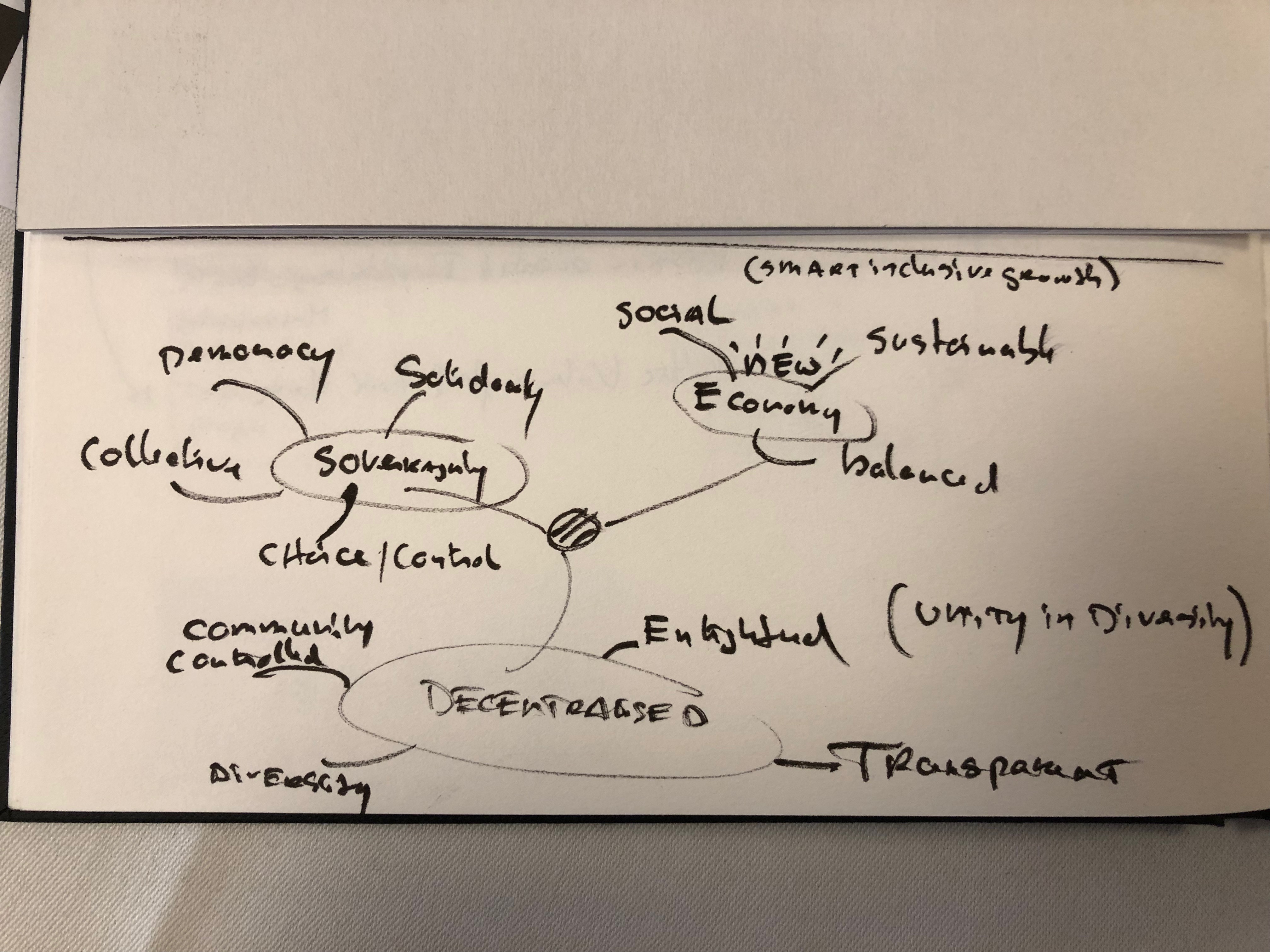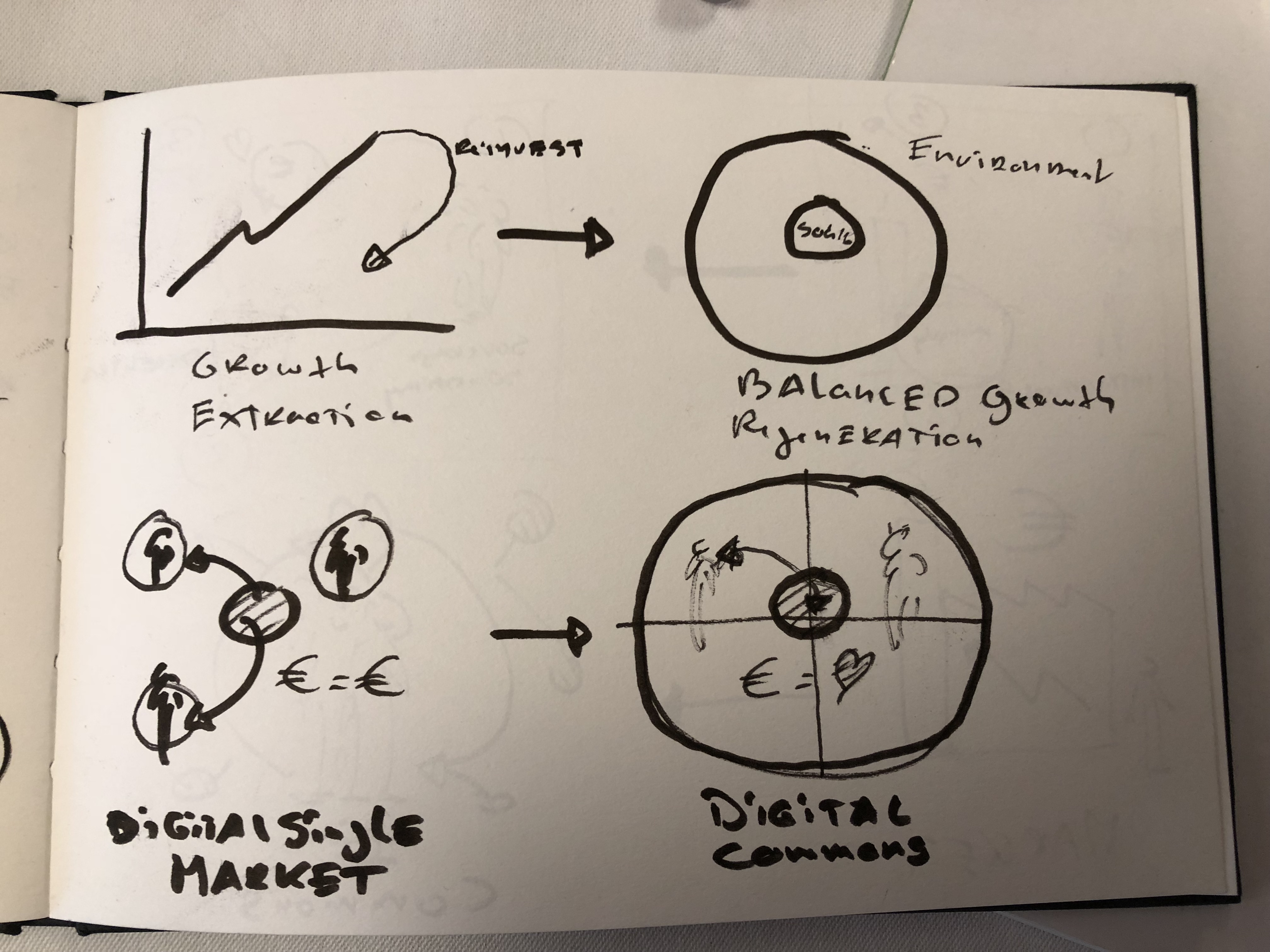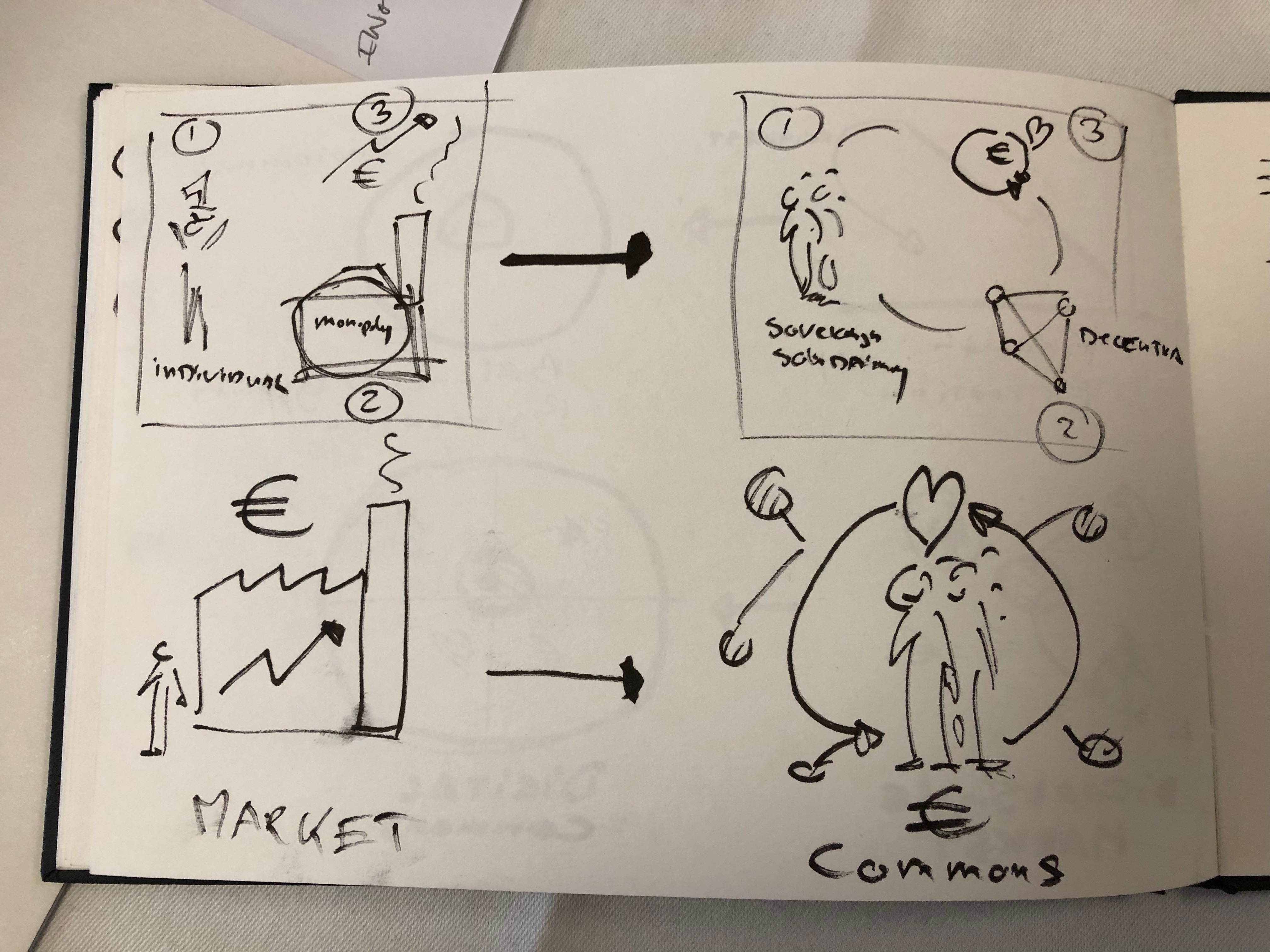Our breakout group consisted of: Bodo, Katja, Volker, Harry, Thomas and Sophie.
We departed from the merged narrative and thought about how to package these core ideas. Here below I am copying in the merged narrative, already integrating some of the major comments & suggestions that surfaced during the feedback session:
European digital commons is a strategy towards a European a democratic digital environment that promotes citizens' self -determination. It is geared towards creating a digital commons with shared infrastructure meeting shared needs, and to contribute engaged digital publics and communities in Europe. It must be designed to be socially equitable and ecologically sustainable. In the digital networked age we need to:
- Prioritise the delivery of social goods over economic growth.
- Recognise the need for individual and collective sovereignty.
- Fund and create a decentralised digital infrastructure stack - while taking a commons approach
- Provide public good via strong public institution in culture, education and science.
- Enable fair labour conditions, competition & collaboration, and prevent monopolies, the privatisation of public goods and surveillance.
How do we package this core narrative ?
We felt like drawing would help, and also discussed a part of speech by Harry on cultural heritage in the European Parliament which adressed similar concerns and reflected on its packaging.
Our group identified 3 key concepts, values, or major ideas that are important for the reframing and which relate to our shared values & principles: New Economy, Sovereignty and Decentralised. These concepts overlap a great deal as they are also part of a lager story, as we will see below in the description.
Overall we felt a top layer framing might be Europe, as a beacon of progressive values, human rights and potentially the bearer of a new digital enlightenment. A Europe that ensures universal access to key services like health & education, invests into the public realm and protects civil liberties such as privacy. A Europe that contrasts with the EU & China and deliberately chooses a model that does not leave everything the powerful and the market, or the state and the powerful. A Europe that embraces unity in diversity and resists a monoculture. The other top layer framing we applied is that of ‘our digital commons’ replacing the idea of 'our digital market'.

New economy: An regenerative economy as opposed to the current extractive one, one that is based on circular principles and not a linear one. An economy that is social, ecologically sustainable, balanced. It relates to the ideas presented by Raworth on economy for people & planet, but also to the de-growth movement, new labour, the commons perspective and the climate change movement. (Note- Commission term: smart inclusive growth)
Sovereignty: This relates to self-determination, choice & control of both individuals, communities and Europe as a whole. People having a say in the way their digital environment functions, hence particpatory governance of this environmemt. Yet in this context we also see this concept relating to solidarity- Solidarty in terms of not leaving everything to the individual but facing these challenges of the digital transformation as a collective. Collectively and in solidarity with each otehr we will set standards for a society that is democratic and where citizens are protected from commodification, privacy intrusion and surveillance through companies' data hunger.
Decentralised : Rather than centralised and in-transparent, both power structures as well as technological infrastructures are decentralised / distributed, allowing for a more community controlled society and embracing the European principles of unity in diversity and subsidiarity. Bottom up, local, peer to peer amd collaborative structures and economomies are enhanced providing for a democratised society.
Contrasts

We felt it might be strategic to contrast clearly with the model we are opposing, also or especially visually.
- Growth & Extraction versus Balanced & Regenerative.
- Linear Versus Circular
- From a atomic /individualistic society to a shared and collective one.
- From the Digital Single Market to the Digital Commons.

Here we contrasted market with commons. The drawings represent
- individualism > sovereignty
- extractive economy > new economy
- centralised > decentralised


